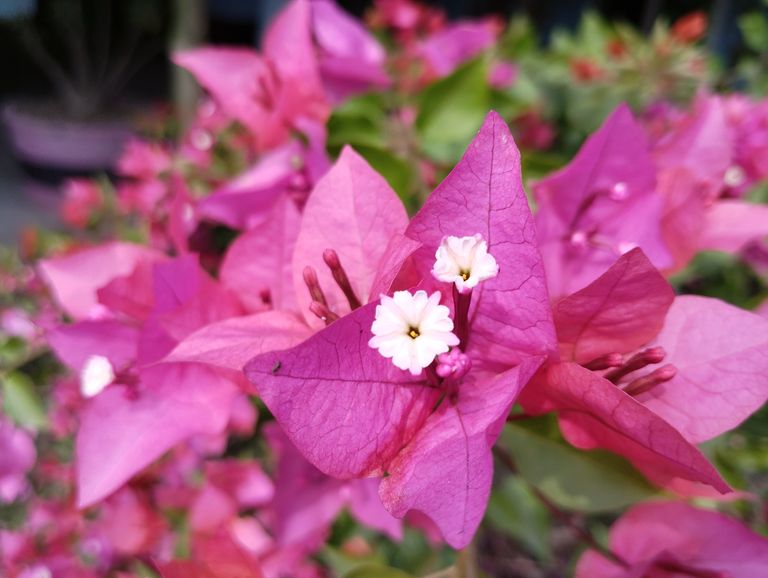
The Beauty of the Krishnachura Flower.
Nature has always been a master artist, painting landscapes with vibrant hues and intricate designs. Among the many breathtaking wonders it offers, few can rival the spectacular beauty of the Krishnachura flower, also known as the Royal Poinciana or Flame Tree. This stunning tree, with its fiery blossoms, is a symbol of both beauty and cultural significance in many parts of the world, particularly in South Asia. As the summer approaches, the Krishnachura tree bursts into a blaze of orange and red, captivating all who gaze upon it. In this blog, we will explore the allure of the Krishnachura flower, its significance, and the joy it brings to the environment and the people who cherish it.
The Splendor of the Krishnachura in Bloom
The Krishnachura (scientific name Delonix regia) is a flamboyant tree that stands out with its wide-spreading branches and umbrella-shaped canopy. Native to Madagascar but now widely cultivated in tropical and subtropical regions, the Krishnachura is adored for its mesmerizing flowers that bloom in clusters. The petals are a vivid mix of red, orange, and yellow, with streaks of white or gold often appearing towards the center of the bloom. The striking contrast between the brilliant flowers and the dark green, feathery leaves creates a visual spectacle that is hard to ignore.
As the Krishnachura blooms in full glory, the landscape around it transforms into a sea of fire-like color. Streets, gardens, and rural areas adorned with these trees seem to come alive with a new spirit, and people are naturally drawn to the charm and vibrant energy that the flowers exude.
A Canopy of Shade and Grace
Beyond the beauty of its blossoms, the Krishnachura tree also offers practical benefits, particularly its dense, wide-spreading canopy that provides ample shade during the hot summer months. The tree's branches stretch out horizontally, creating a broad, umbrella-like formation that offers relief from the scorching sun. For many, sitting under the shade of a Krishnachura tree is a serene and calming experience. The play of sunlight filtering through the vibrant flowers and delicate leaves creates an atmosphere of tranquility.
In cities and towns, Krishnachura trees often line avenues, parks, and public spaces, providing both aesthetic pleasure and practical shelter. For students walking home from school, workers on their lunch break, or simply anyone seeking refuge from the heat, the Krishnachura tree is a welcome companion.
The Cultural Significance of the Krishnachura
In many parts of South Asia, particularly in Bangladesh and India, the Krishnachura flower holds cultural and emotional significance. It is often associated with the arrival of summer, a season that brings with it both scorching heat and the promise of renewal. The sight of the Krishnachura in bloom is a signal that summer is in full swing, and its vibrant colors have inspired countless poets, artists, and musicians throughout the ages.
In Bangladesh, the Krishnachura flower is celebrated for its symbolic connection to love, passion, and the cycle of life. The fiery red blossoms are often seen as a metaphor for the burning intensity of emotions, while the tree’s wide-reaching branches represent the all-encompassing nature of love and life’s journey. The Krishnachura has thus become a recurring theme in Bengali literature, where it is used to evoke deep feelings of nostalgia, longing, and the beauty of nature.
Ecological Importance of the Krishnachura
While the Krishnachura is primarily celebrated for its beauty, it also plays an important role in the ecosystems where it grows. The tree is a valuable source of nectar for bees, butterflies, and other pollinators, contributing to the health and biodiversity of its environment. Birds, too, are drawn to the Krishnachura, often nesting in its branches and feeding on the insects that gather around its flowers.
The Krishnachura’s ability to thrive in arid and nutrient-poor soils also makes it a valuable addition to urban and suburban landscapes. Its deep root system helps prevent soil erosion, making it an excellent tree for stabilizing banks, roadsides, and other vulnerable areas. The Krishnachura’s resilience and adaptability to different climates and soil types have made it a popular choice for city planners and gardeners looking to add both beauty and functionality to their landscapes.
A Global Favorite
Although native to Madagascar, the Krishnachura tree has spread to many parts of the world and is particularly popular in tropical and subtropical regions such as the Caribbean, Southeast Asia, and Africa. Its rapid growth, stunning appearance, and ability to provide ample shade have made it a favorite in public parks, gardens, and along city streets. In many places, the Krishnachura has become a beloved symbol of summer, and festivals and celebrations are often planned around the time it comes into bloom.
In the Caribbean, the tree is known as the Flamboyant or Flame Tree, and its flowers are a common sight in gardens and along boulevards. In Cuba and Puerto Rico, the Krishnachura is a cherished tree, with its blossoms often used in local festivities and celebrations. In India, the Krishnachura is widely planted in gardens and public spaces, where it is appreciated for its ability to transform the landscape with its vivid color and lush canopy.
Krishnachura in Art and Poetry
The beauty of the Krishnachura has not gone unnoticed by artists and poets. Throughout history, its vibrant blossoms and graceful form have served as inspiration for works of art and literature. In Bengali poetry, the Krishnachura is often used as a symbol of the fleeting nature of time and the bittersweet emotions that come with change. The tree's brief, intense blooming period serves as a reminder of life’s impermanence and the beauty that can be found in moments of transition.
In visual art, the Krishnachura’s vibrant colors and striking shape make it a popular subject for painters and photographers. The contrast between the tree’s vivid red flowers and the deep blue of the summer sky creates a stunning image that has been captured in countless works of art.
A Symbol of Hope and Renewal
Perhaps the most compelling aspect of the Krishnachura’s beauty is its ability to symbolize hope and renewal. After months of dormancy, the tree suddenly bursts into bloom, transforming the landscape with its radiant flowers. This cycle of renewal, where the Krishnachura sheds its old leaves and flowers only to be reborn with even more beauty, serves as a powerful reminder of nature’s resilience and the endless cycles of life.
For many, the Krishnachura flower is a symbol of hope, representing the idea that even after periods of hardship and loss, beauty and joy can return. Whether through its stunning appearance, its cultural significance, or its ecological importance, the Krishnachura continues to inspire awe and admiration in all who encounter it.
Conclusion
The Krishnachura flower is more than just a beautiful bloom; it is a symbol of life’s fleeting beauty, the cycles of nature, and the enduring power of hope. Whether admired for its aesthetic appeal, its cultural significance, or its environmental contributions, the Krishnachura holds a special place in the hearts of many around the world. As we gaze upon its fiery blossoms, we are reminded of the incredible beauty that nature has to offer and the many ways in which it enriches our lives. The Krishnachura, with its graceful form and vibrant colors, stands as a testament to the wonder of the natural world.
The Blooming Time of the Krishnachura Tree: A Fiery Spectacle of Nature
The Krishnachura tree (Delonix regia), commonly known as the flame tree or royal poinciana, is one of the most breathtakingly beautiful trees to adorn the tropical and subtropical regions. With its fiery red-orange blossoms and delicate fern-like leaves, the Krishnachura tree stands as a symbol of summer in many countries. In Bangladesh, India, and many other regions, the blooming of the Krishnachura marks the arrival of the hottest months of the year, transforming the landscape into a riot of color and vibrancy. This blog will take you through the blooming time of the Krishnachura, its significance, and its mesmerizing beauty.
The Krishnachura Tree: A Brief Overview
Native to Madagascar but widely cultivated across tropical regions, the Krishnachura tree is admired not only for its brilliant flowers but also for its wide, umbrella-like canopy, which provides shade and relief during the scorching summer months. It is a deciduous tree, meaning it sheds its leaves during a certain part of the year, and blooms with striking, bright red or orange flowers that dominate the landscape.
The scientific name of Krishnachura is Delonix regia, belonging to the Fabaceae family. It is called the flame tree due to its intense, flame-colored blooms that seem to ignite the branches during its flowering season.
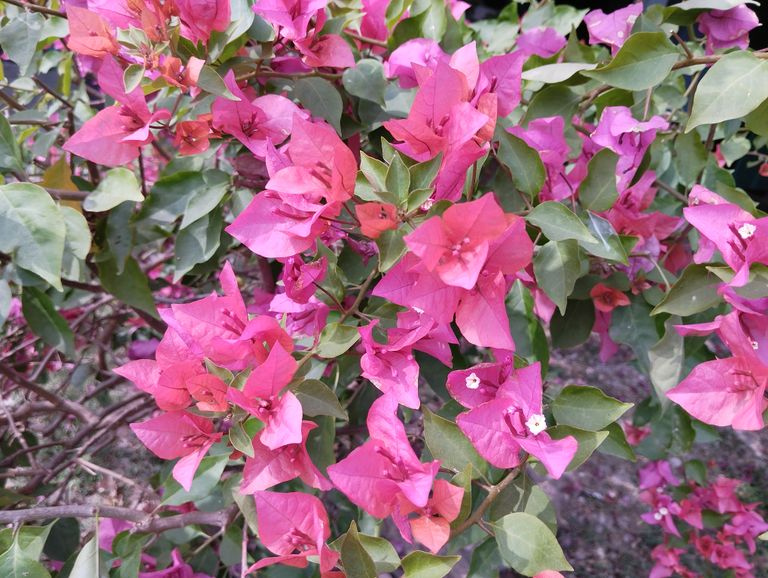
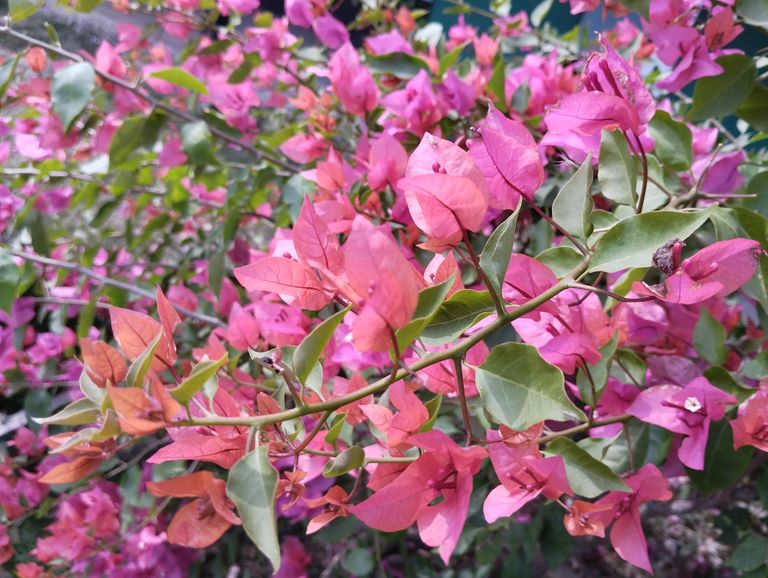
When Does the Krishnachura Bloom?
The blooming season of the Krishnachura tree is a highly anticipated event in the regions where it grows. The tree usually begins to flower during the late spring and early summer, with the exact timing depending on the climate of the region. In tropical and subtropical countries like Bangladesh, India, Sri Lanka, and parts of Africa, the tree typically starts to bloom in April or May, continuing to flower throughout the summer, often into June or July.
The Krishnachura’s blooming period coincides with the hottest months of the year, a time when the landscape often feels barren and dry. The tree’s vibrant red-orange flowers bring much-needed color and vibrancy to the environment, providing a striking contrast to the dry, brown surroundings. The intense heat during these months triggers the flowering process, making Krishnachura a quintessential symbol of summer in the regions it thrives.
The Life Cycle of the Krishnachura Bloom
As a deciduous tree, the Krishnachura sheds its leaves before blooming. This leaf-shedding usually occurs in late winter or early spring. Once the tree is bare, the flower buds begin to develop, and by late April or May, the tree is covered in clusters of fiery red or orange flowers. Each flower is about 8 cm wide, with four spreading scarlet or orange-red petals and a fifth upright petal that is slightly larger and often marked with yellow and white. These flowers are arranged in large, terminal clusters at the ends of the branches.
During its peak flowering season, the Krishnachura tree becomes a dazzling sight. The branches, devoid of leaves, are adorned with dense clusters of flowers, creating the appearance of a tree engulfed in flames. This spectacle lasts for several weeks, with the flowers eventually falling to the ground, creating a carpet of red beneath the tree.
By mid-summer, the tree begins to grow new leaves, which are soft, light green, and finely divided, resembling fern fronds. The seed pods, long and flat, also begin to develop during this time, often hanging from the branches long after the flowers have faded. These seed pods can grow up to 60 cm in length and are a distinctive feature of the Krishnachura tree.
Significance of the Krishnachura Bloom
The Krishnachura tree holds cultural and aesthetic significance in many countries. In Bangladesh, the blooming of the Krishnachura is celebrated as a harbinger of summer. It is a common sight in cities and towns, lining avenues and parks, where people often gather under its shade to escape the sweltering heat. The tree is frequently mentioned in Bengali literature and poetry, symbolizing passion, love, and the intensity of summer.
In India, the Krishnachura is often planted in gardens and along streets for its ornamental value. The bright flowers attract birds and insects, making it an important part of the local ecosystem. The tree is also associated with the monsoon season in some parts of India, as its flowering period precedes the arrival of the much-awaited rains.
The Krishnachura's bloom is also significant in tropical African countries, where it is often planted for shade and its ornamental value. In many places, the tree is considered a sign of good luck and prosperity.
Environmental and Ecological Role of the Krishnachura
Beyond its visual appeal, the Krishnachura tree plays an essential ecological role. Its wide canopy provides shade and cools the environment during the hot summer months, making it a favorite spot for people and animals alike. The tree also helps to improve soil quality, as its fallen leaves decompose and add nutrients to the soil.
The flowers of the Krishnachura are nectar-rich and attract a variety of pollinators, including bees and birds. The seeds of the tree are also consumed by certain bird species, contributing to the tree's natural dispersal and regeneration process.
However, while the Krishnachura is admired for its beauty, it can sometimes be invasive in non-native environments. In some regions, it has spread aggressively, outcompeting local flora and disrupting ecosystems. For this reason, it is essential to manage its growth carefully in areas where it has been introduced.
The Symbolism of the Krishnachura
The Krishnachura’s fiery blooms and dramatic appearance have made it a symbol of passion, love, and intensity in many cultures. In Bengali literature, the tree often symbolizes unrequited love or the intensity of romantic emotions, much like the hot summer months in which it blooms. The red-orange flowers are seen as a metaphor for the burning passion of love, while the tree’s ability to thrive in the harshest conditions represents resilience and strength.
In many tropical countries, the Krishnachura is also a symbol of celebration and joy. Its blooming period often coincides with festivals, school holidays, and the start of the monsoon season, making it a tree associated with renewal, hope, and happiness.
Conclusion
The Krishnachura tree, with its vibrant flowers and dramatic presence, is one of nature’s most awe-inspiring spectacles. Its bloom marks the arrival of summer in many parts of the world, transforming the landscape with its fiery red-orange blossoms. The tree’s ecological importance, cultural significance, and symbolic value make it a beloved and celebrated part of the natural environment.
Whether you are walking down a city street lined with Krishnachura trees or admiring a solitary tree in a rural setting, the sight of this magnificent tree in full bloom is sure to leave a lasting impression. As the summer sun blazes down, the Krishnachura stands as a reminder of nature’s ability to thrive even in the harshest conditions, providing beauty, shade, and a sense of awe to all who witness its splendor.
The Benefits of Krishnachura (Royal Poinciana) Flowers: A Glimpse into Nature's Vibrant Gift
Krishnachura, also known as the Royal Poinciana or Delonix regia, is a tree admired worldwide for its striking, fiery red-orange blossoms. Native to Madagascar, the tree has spread across tropical and subtropical regions, becoming a popular ornamental plant due to its aesthetic appeal. In many cultures, it is not only cherished for its beauty but also valued for its diverse benefits. This blog explores the various aspects of the Krishnachura flower, emphasizing its ecological, medicinal, and cultural significance.
Ecological Significance
The Krishnachura tree plays an essential role in ecosystems, especially in urban environments where its canopy provides shade and reduces the heat island effect. Here are some key ecological benefits:
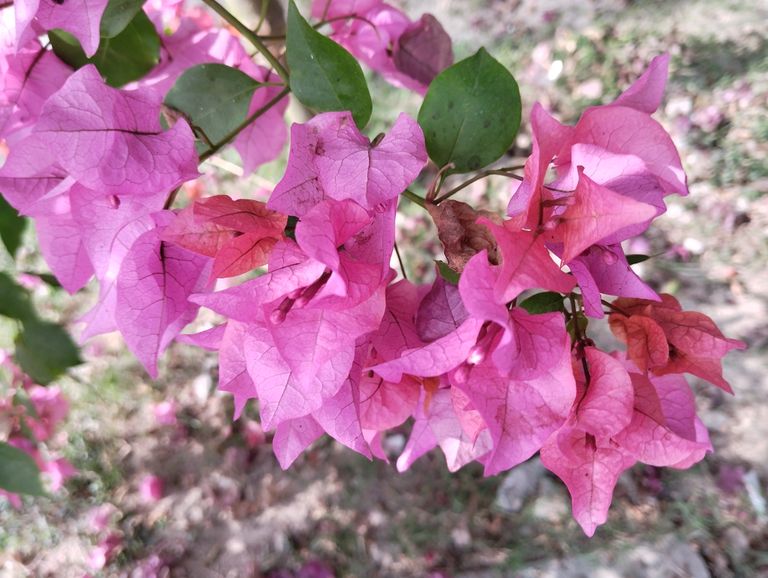
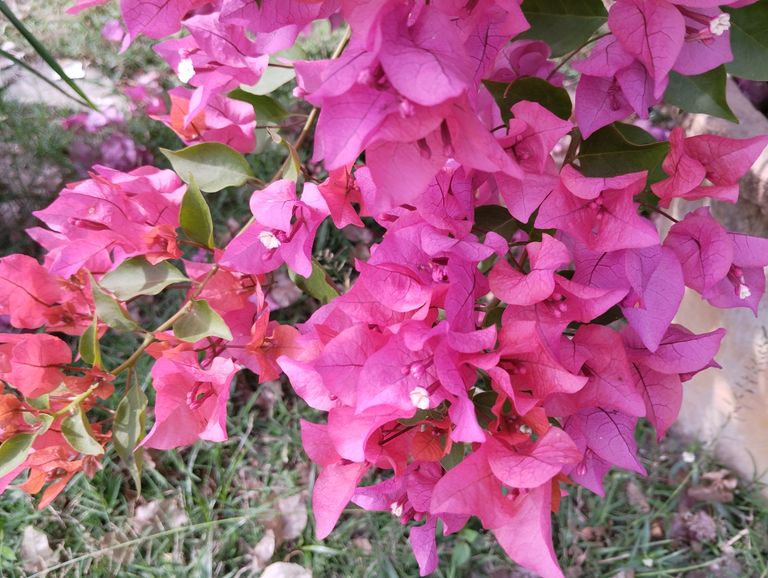
a. Soil Enrichment
Krishnachura trees have nitrogen-fixing properties, which means they can improve soil fertility. The tree’s roots work in conjunction with nitrogen-fixing bacteria, enhancing the availability of this crucial nutrient in the soil. This helps in promoting the growth of other plants around it, making it an excellent companion for agroforestry and reforestation efforts.
b. Support for Biodiversity
The vibrant flowers of Krishnachura attract various pollinators, including bees, butterflies, and birds. This not only aids in the reproduction of the tree itself but also supports local biodiversity. Pollinators, in turn, help fertilize nearby plants, contributing to the overall health of ecosystems.
c. Shade and Cooling Effect
Due to its wide-spreading canopy, Krishnachura provides significant shade, which cools down the surrounding environment. In urban areas, especially in tropical regions, planting this tree can help reduce the temperature and provide respite from the heat for both humans and wildlife.
Medicinal Properties
Although the Krishnachura tree is primarily known for its ornamental value, various parts of the plant have been used in traditional medicine. In many cultures, the bark, leaves, and seeds of the tree have been utilized for their healing properties.
a. Antioxidant Properties
Research has shown that the Krishnachura flower contains antioxidants, which help neutralize free radicals in the body. Free radicals are harmful molecules that can cause oxidative stress, leading to chronic diseases such as cancer, heart disease, and premature aging. The antioxidants found in the flower may play a role in protecting the body from these conditions.
b. Anti-inflammatory Uses
The bark and leaves of the Krishnachura tree are used in traditional medicine to treat inflammation. Inflammation is a natural immune response, but chronic inflammation can lead to various health issues, including arthritis and other inflammatory diseases. Extracts from the tree have been used to alleviate symptoms of such conditions, although more research is needed to fully understand its efficacy.
c. Wound Healing
In some traditional medicine systems, the leaves and bark of the Krishnachura are applied topically to wounds to promote faster healing. This is believed to be due to the tree’s natural antibacterial properties, which help prevent infection and speed up recovery.
d. Treatment for Fever and Respiratory Issues
The seeds and leaves are also used in some regions to treat fevers and respiratory conditions like bronchitis. The natural compounds in the plant are believed to have a soothing effect on the respiratory tract and can reduce symptoms of cough and congestion.
Cultural and Symbolic Importance
Krishnachura holds cultural and symbolic significance in many parts of the world, particularly in South Asia. The tree’s vibrant flowers are often associated with the arrival of summer, and they play a role in poetry, art, and festivals.
a. Symbol of Passion and Love
In South Asian literature, the Krishnachura flower is often seen as a symbol of passion and love. The fiery red color of the flowers evokes strong emotions, and the tree is frequently mentioned in poems and songs that celebrate beauty, desire, and longing. The sight of Krishnachura in full bloom is thought to symbolize the height of summer and the intensity of life and love.
b. Used in Ceremonial and Festive Occasions
In some cultures, the flowers of the Krishnachura are used during religious or festive occasions. The bright flowers are sometimes used in floral decorations or offered during spiritual ceremonies, symbolizing beauty, life, and the divine.
Aesthetic and Ornamental Value
Beyond its ecological and medicinal benefits, Krishnachura’s most apparent value lies in its aesthetic beauty. The tree’s strikingly colorful flowers, combined with its broad canopy and feathery leaves, make it a popular choice for landscaping in tropical and subtropical climates.
a. Urban Beautification
The Krishnachura tree is commonly planted along roadsides, in parks, and in gardens for its ornamental value. Its large, umbrella-shaped canopy provides shade, while the brilliant red or orange flowers add a splash of color to the surroundings, creating picturesque landscapes.
b. Attracts Tourists and Photographers
In regions where the Krishnachura blooms in abundance, the tree becomes a tourist attraction, drawing visitors who wish to witness the spectacle of its vibrant flowers. Photographers and nature enthusiasts often seek out the tree for its photogenic qualities, contributing to tourism and local economies.